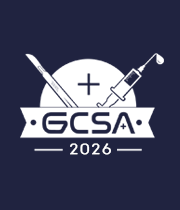Head and Neck
Head and Neck The head and neck region is a complex and vital part of the human body, encompassing numerous structures responsible for crucial functions such as sensory perception, communication, and the passage of food and air. At its core, the head houses the brain, the control center of the body, encased within the protective skull. Within this region, the face serves as the primary interface for communication and expression, featuring sensory organs like the eyes for vision, the nose for olfaction, and the mouth for both taste and speech. The neck acts as a conduit between the head and the rest of the body, facilitating the passage of vital structures such as the trachea for air and the esophagus for food. It also provides support and mobility through a complex arrangement of muscles, ligaments, and bones, allowing for movements like rotation, flexion, and extension. Moreover, the neck harbors vital blood vessels like the carotid arteries, supplying oxygen-rich blood to the brain, and the jugular veins, responsible for draining deoxygenated blood back to the heart. Within this region, the lymph nodes play a crucial role in immune function, filtering lymphatic fluid and capturing pathogens to prevent infection spread. Additionally, the thyroid gland, located in the front of the neck, regulates metabolism and hormone balance, exerting influence over numerous bodily functions. Pathologies within the head and neck region can manifest in various ways, ranging from benign growths like goiters to life-threatening conditions such as head and neck cancers. Consequently, thorough examination and prompt intervention are essential for diagnosing and managing these disorders effectively. Advanced imaging techniques such as CT scans and MRIs, along with minimally invasive procedures like endoscopy, have revolutionized the diagnosis and treatment of head and neck conditions, enabling healthcare professionals to provide personalized and targeted care to patients. Overall, the head and neck region represent a delicate balance of form and function, where intricate anatomy converges with vital physiological processes to sustain life and wellbeing.



Title : Understanding of foley catheter care and implications amongst patients at Multi Institute private practice
Ojas Vijayanand Potdar, Thunga STH Hospital, India
Title : To what extent do disease modifying anti rheumatic drugs affect bone union in trauma and orthopaedic patients
Myat P Pan, The Royal National Orthopaedic Hospital, United Kingdom
Title : Spontaneous colonic perforation in a pediatric patient with acute febrile lllness: A case report
Abhiraj Yadav, Manipal College of Medical Sciences, Nepal
Title : Sleep and thermoregulation why does your anaesthetic affect temperature
Rachel Shaw, Lister Hospital, United Kingdom
Title : Unusual cause of small bowel obstructions in infants: A warning letter to parents
Gamal Al Saied, Al-Azhar University, Egypt
Title : From panic to protocol: A ?IP on developing a paediatric breast referral pathway
Neriah Mangion, University Hospital Sussex NHS Foundation Trust , United Kingdom